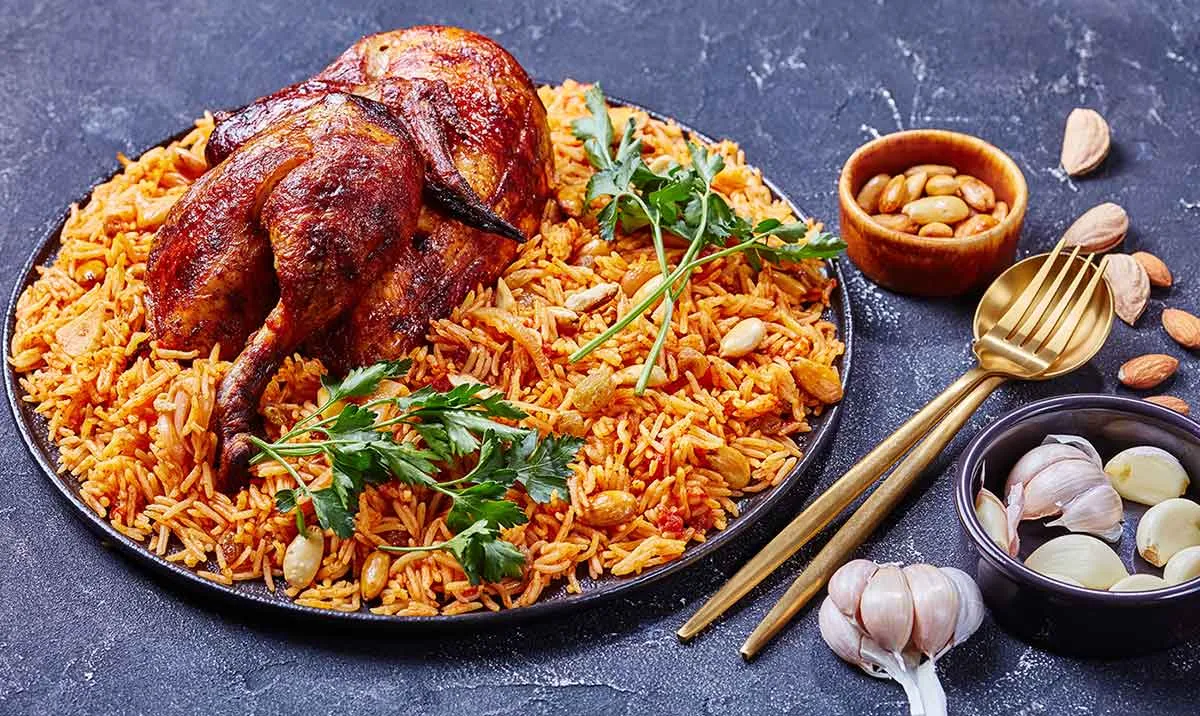Take Me to The Recipes!
Saudi Arabian food is a unique blend of flavors and ingredients. Each generation passes them to the next. It is a combination of traditional dishes and recipes that adapts to suit the modern palate.
Embark on a culinary journey through the rich tapestry of Saudi Arabian food! Explore the distinctive flavors and cultural heritage of this cuisine, known for its use of aromatic spices, healthy fats, and a blend of sweet and savory elements. Try your hand at recreating these delectable recipes at home and savor the essence of Saudi Arabian culinary traditions.
Join us in celebrating the flavors that have been passed down through generations, connecting people through the joy of shared meals.
Take Me to The Recipes!
Key Takeaways: Introduction to Saudi Arabian Food
Culinary Heritage: Saudi Arabian food is a rich blend of flavors and ingredients passed down through generations, combining traditional dishes with adaptations for modern tastes.
Distinctive Flavors: Known for the use of spices, herbs, nuts, and fresh fruits and vegetables. Common meat choices include lamb, beef, and chicken, often accompanied by rice and bread.
Sweet Elements: The cuisine features the sweetness of dates, honey, and other natural sweeteners, providing a balance to savory dishes.
Culinary Journey: Saudi Arabian recipes offer a diverse range of starter courses, main courses, and desserts, providing a taste of Middle Eastern delights.
History and Culture:
- Saudi Arabian food has deep roots in Bedouin culture, showcasing a nomadic lifestyle with simple, hearty dishes.
- Influences from other cultures, geographical diversity, and the country’s Islamic faith contribute to the unique culinary landscape.
Benefits of Saudi Arabian Food
- Use of healthy fats, such as olive oil and ghee.
- Rich in fiber, promoting digestion and reducing disease risks.
- Opportunities to explore culture, history, and connect with people through shared meals.
Where is Saudi Arabia?


Index to Article
You may also Enjoy the Following Articles
- North and South American Cuisine – A Culinary Expedition
- European Cuisine: Savor the Continent’s Best Culinary Secrets!
- African Cuisine: Discover the Bold Flavors & Global Charm!
- Asian Cuisine Unlock its Secrets – Taste, Health & Global Influence!
- Oceania Cooking: A Culinary Journey Through the Pacific
We include following delicious Saudi Arabian recipes in this article
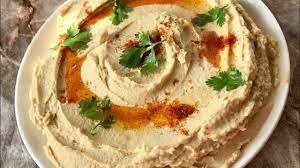

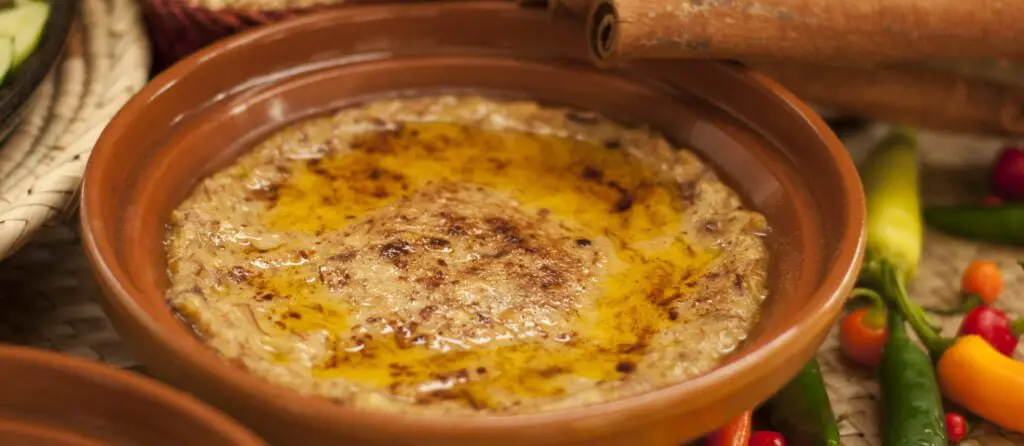

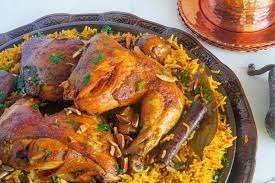
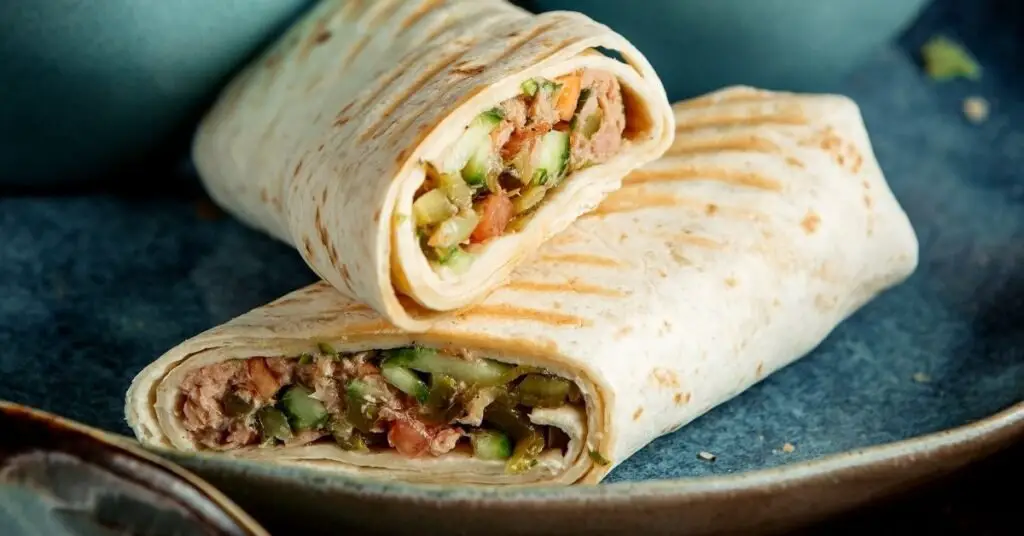

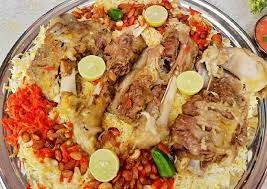
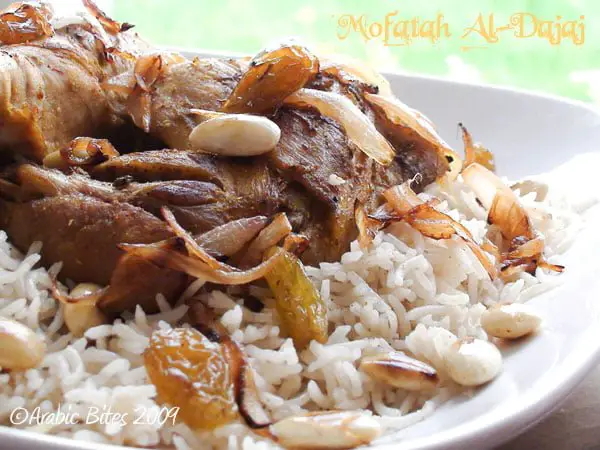
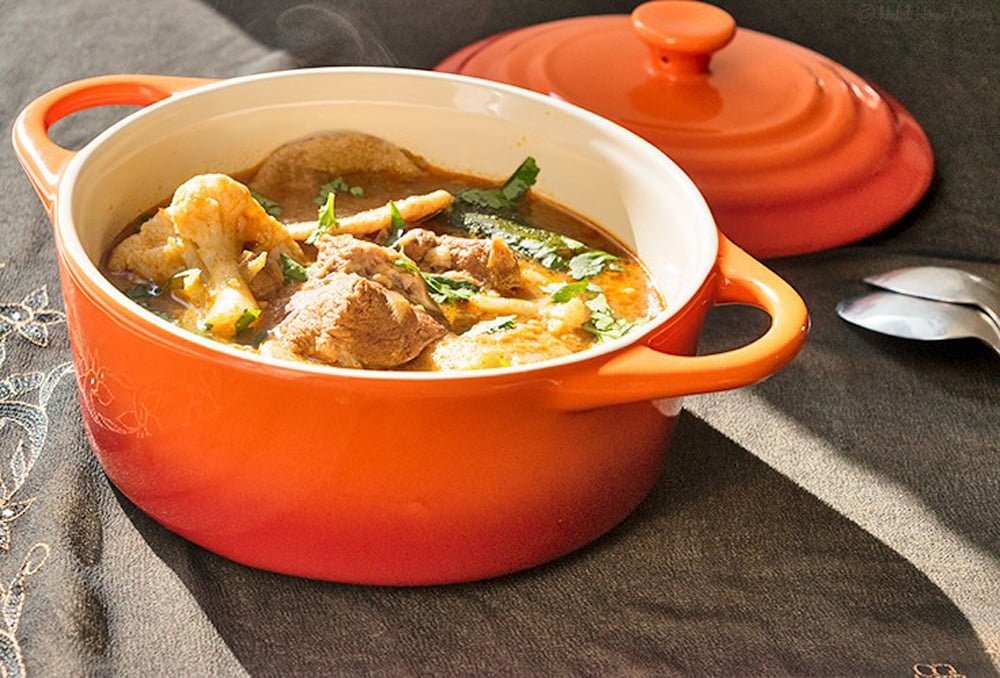
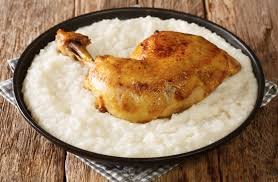
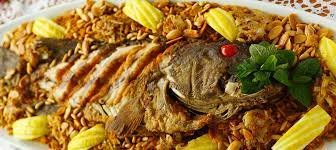




Saudi Arabian Recipes – Great Examples to Try at Home
Embark on a culinary journey through the rich tapestry of Saudi Arabian food. Known for its aromatic spices, bold flavors, and hearty dishes, Saudi Arabian recipes offer a taste of Middle Eastern delights. In this article, we’ll explore delectable starter courses, main courses, and indulgent desserts that you can recreate in your own kitchen.
Saudi Arabian Food – Starter Courses
Saudi Arabian starter courses are a celebration of flavors and textures, showcasing the uniqueness of the region’s culinary traditions. From the iconic hummus to the flavorful kibbeh, these dishes are perfect for setting the tone of a delightful meal.
Saudi Arabian Food – Hummus
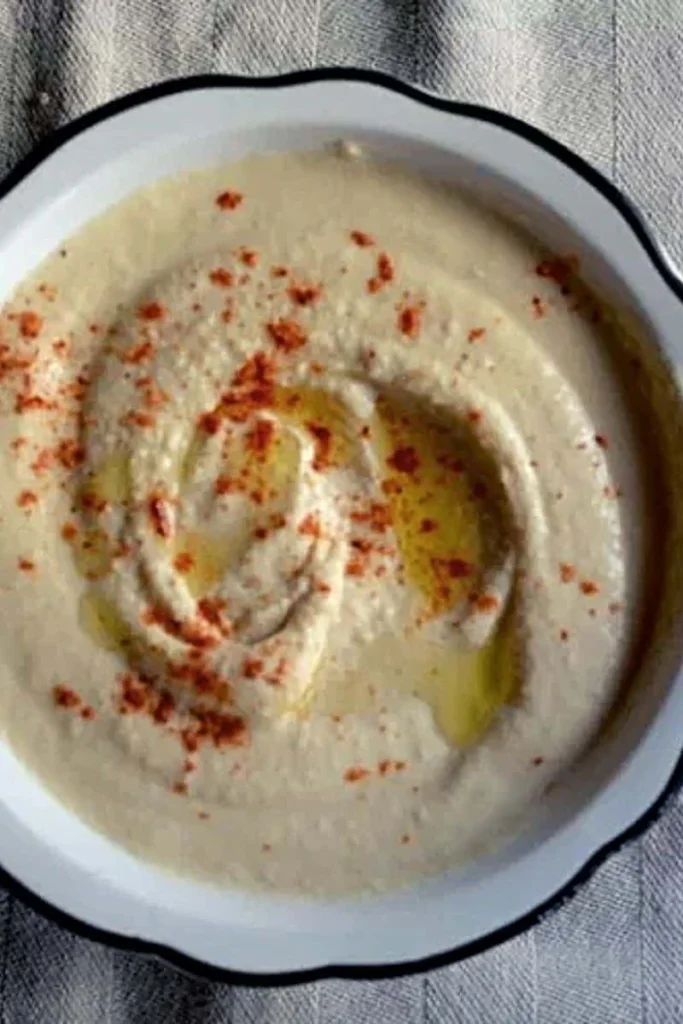
Hummus, originating from the Middle East, is a staple in Saudi Arabian cuisine. Served during family gatherings and festive occasions, it’s a symbol of hospitality.
Hummus has ancient roots, with variations across the Middle East.
Saudi Arabian Food – Hummus Ingredients
- Chickpeas
- tahini
- olive oil
- garlic
- lemon juice
- cumin.
Saudi Arabian Food Recipe – Hummus
- Blend ingredients
- garnish with olive oil
- serve with pita bread.
Presentation
Present Hummus in a shallow dish, drizzled with olive oil and accompanied by fresh vegetables and warm pita bread.
Drink Pairing: Enjoy hummus with a refreshing glass of mint lemonade.
Saudi Arabian Food – Falafel

History and Background of Falafel in Saudi Arabian Cuisine
Falafel, a popular and savory dish in Saudi Arabian cuisine, has roots in the Middle East and is widely enjoyed across the region. Originating from Egypt, falafel has become a staple street food and a beloved snack.
This deep-fried ball or patty is made from ground chickpeas or fava beans, mixed with herbs and spices. In Saudi Arabia, falafel is not just a tasty treat but a cultural delight enjoyed in various settings, from family gatherings to casual outings.
Ingredients for Falafel
- 1 cup dried chickpeas, soaked overnight
- 1 small onion, roughly chopped
- 1/4 cup fresh parsley, chopped
- 1/4 cup fresh cilantro, chopped
- 3 cloves garlic
- 1 teaspoon ground cumin
- 1 teaspoon ground coriander
- 1/2 teaspoon baking soda
- Salt to taste
- Black pepper to taste
- Vegetable oil for frying
Recipe for Falafel
1. Prepare Chickpeas
- Ingredients:
- 1 cup dried chickpeas
- Water (for soaking)
- Steps:
- Rinse the dried chickpeas thoroughly.
- Soak them in water overnight or for at least 12 hours.
2. Blend Ingredients
- Ingredients:
- Soaked chickpeas
- 1 small onion, roughly chopped
- 1/4 cup fresh parsley, chopped
- 1/4 cup fresh cilantro, chopped
- 3 cloves garlic
- 1 teaspoon ground cumin
- 1 teaspoon ground coriander
- 1/2 teaspoon baking soda
- Salt to taste
- Black pepper to taste
- Steps:
- Drain the soaked chickpeas and pat them dry with a paper towel.
- In a food processor, combine chickpeas, onion, parsley, cilantro, garlic, cumin, coriander, baking soda, salt, and black pepper.
- Blend until you achieve a coarse texture.
3. Form Falafel Patties
- Ingredients:
- Blended chickpea mixture
- Steps:
- Scoop the mixture and form small patties with your hands.
- Ensure the patties are compact to prevent them from falling apart during frying.
4. Fry Falafel
- Ingredients:
- Falafel patties
- Vegetable oil (for frying)
- Steps:
- Heat vegetable oil in a deep fryer or a pan.
- Carefully place the falafel patties into the hot oil and fry until golden brown.
- Remove and drain excess oil on paper towels.
5. Serve and Enjoy
- Ingredients:
- Fried falafel patties
- Steps:
- Serve falafel hot with tahini sauce or yogurt-based sauce.
- Enjoy as a snack, in pita bread, or as part of a meal.
Serving Size, Cooking Time, and Nutritional Information
- Serving Size: Approximately 4 people
- Cooking Time: Approximately 30 minutes
- Calories: The estimated calorie count for a serving of falafel is around 150-200 calories, depending on the size and cooking method. (Note: Nutritional information may vary based on specific ingredients and portion sizes.)
Saudi Arabian Food – Kibbeh

Kibbeh, a savory dish made of minced meat and bulgur, has deep roots in Arabian cuisine. It’s often served during festive occasions and family gatherings.
Kibbeh has ancient origins and is beloved across the Middle East.
Saudi Arabian Food – Kibbeh Ingredients
- Ground lamb
- bulgur
- onion
- pine nuts
- spices.
Saudi Arabian Food Recipe – Kibbeh
- Mix ingredients
- shape into patties
- bake until golden brown.
Presentation
Serve kibbeh on a platter, garnished with fresh herbs and accompanied by yogurt sauce.
Drink Pairing
Pair kibbeh with a traditional Saudi Arabian mint tea for a delightful combination.
Saudi Arabian Food Recipes – Main Courses
Saudi Arabian main courses are a feast for the senses, featuring a blend of aromatic spices and bold flavors. From the iconic Kabsa to the comforting Samboosa, these dishes are a culinary delight.
Saudi Arabian Food – Mufattah

History and Background of Mufattah in Saudi Arabian Cuisine
Mufattah, a traditional dish in Saudi Arabian cuisine, has deep historical roots in Arabian culinary traditions. Originating from the Arabian Peninsula, Mufattah showcases the region’s age-old cooking methods and the importance of communal dining.
This dish has been a staple in Saudi Arabian households, passed down through generations, and continues to be a symbol of hospitality and togetherness.
Ingredients for Mufattah
- 1 whole lamb, cleaned and prepared for roasting
- 3 cups basmati rice
- 1 cup ghee (clarified butter)
- 1 cup almonds, blanched and slivered
- 1 cup pine nuts
- 1 tablespoon ground cinnamon
- 1 tablespoon ground black pepper
- 1 tablespoon ground coriander
- 1 tablespoon ground cumin
- Salt to taste
- Arabic flatbread (optional, for serving)
Recipe for Mufattah
1. Prepare the Lamb
- Rub the lamb with a mixture of ground cinnamon, black pepper, coriander, cumin, and salt.
- Allow the lamb to marinate for at least 2 hours.
2. Roast the Lamb
- Preheat the oven to 350°F (180°C).
- Place the marinated lamb on a roasting rack and roast for approximately 3-4 hours or until the meat is tender and cooked through.
3. Cook the Rice
- Rinse basmati rice under cold water until the water runs clear.
- In a large pot, cook the rice according to package instructions.
4. Prepare the Nutty Topping
- In a separate pan, heat ghee over medium heat.
- Add slivered almonds and pine nuts, sautéing until they turn golden brown.
5. Assemble Mufattah
- Spread the cooked rice on a large serving platter.
- Place the roasted lamb on top of the rice.
- Sprinkle the nutty topping over the lamb and rice.
6. Serve and Enjoy
- Serve Mufattah hot, and you can accompany it with Arabic flatbread if desired.
Serving Size, Cooking Time, and Nutritional Information
- Serving Size: Approximately 8-10 people
- Cooking Time: Approximately 4-5 hours (including marination)
- Calories: The estimated calorie count for Mufattah varies based on serving size and specific ingredients. On average, it’s around 600 calories per serving.
Saudi Arabian Food – Matazeez

History and Background of Matazeez in Saudi Arabian Cuisine
Matazeez, a cherished dish in Saudi Arabian cuisine, has a history deeply rooted in the cultural traditions of the Arabian Peninsula. Originating from the heart of Saudi Arabia, Matazeez represents the art of transforming simple ingredients into a delicious and satisfying meal.
This dish, often enjoyed during festive occasions and family gatherings, reflects the importance of communal dining in Saudi Arabian culture.
Ingredients for Matazeez
- 2 cups basmati rice
- 1 lb lamb, cubed
- 1 cup carrots, grated
- 1 cup zucchini, grated
- 1 cup green beans, chopped
- 1 large onion, finely chopped
- 3 cloves garlic, minced
- 1/4 cup vegetable oil
- 1 teaspoon ground cumin
- 1 teaspoon ground coriander
- 1 teaspoon ground cinnamon
- Salt and pepper to taste
- 4 cups chicken or vegetable broth
- 1/2 cup raisins (optional, for garnish)
- Fresh parsley for garnish
Recipe for Matazeez
1. Prepare the Ingredients
- Rinse basmati rice under cold water until the water runs clear.
- In a large pot, heat vegetable oil over medium heat.
2. Sauté Aromatics
- Add chopped onions and minced garlic to the pot. Sauté until they become golden brown.
3. Brown the Lamb
- Introduce cubed lamb to the pot. Season with ground cumin, coriander, cinnamon, salt, and pepper.
- Brown the lamb on all sides.
4. Add Vegetables and Rice
- Stir in grated carrots, zucchini, and chopped green beans.
- Add rinsed basmati rice to the pot, combining it with the lamb and vegetables.
5. Pour Broth and Cook
- Pour chicken or vegetable broth into the pot, ensuring all ingredients are submerged.
- Bring the mixture to a boil, then reduce the heat to low, cover, and let it simmer until the rice and lamb are fully cooked (approximately 25-30 minutes).
6. Garnish and Serve
- Once cooked, fluff the rice with a fork.
- Garnish Matazeez with raisins and fresh parsley before serving.
Serving Size, Cooking Time, and Nutritional Information
- Serving Size: Approximately 6 people
- Cooking Time: Approximately 40 minutes
- Calories: The estimated calorie count for Matazeez is around 400 calories per serving. (Note: Nutritional information may vary based on specific ingredients and portion sizes.)
Saudi Arabian Food – Saleeg

History and Background of Saleeg in Saudi Arabian Cuisine
Saleeg, a comforting dish in Saudi Arabian cuisine, has roots in Arabian hospitality and the ancient traditions of the Arabian Peninsula. Originating from the heart of Saudi Arabia, Saleeg reflects the simplicity of ingredients combined with rich flavors.
Traditionally prepared during gatherings and celebrations, Saleeg exemplifies the warmth and generosity ingrained in Saudi Arabian culture.
Ingredients for Saleeg
- 2 cups white rice
- 1 cup chicken, shredded
- 4 cups chicken broth
- 2 cups milk
- 1 cup water
- 1 cup heavy cream
- 1/2 cup butter
- Salt to taste
- Ground white pepper to taste
- Ground cinnamon for garnish
- Toasted almonds for garnish
Recipe for Saleeg
1. Prepare Rice and Chicken
- Rinse white rice under cold water until it runs clear.
- In a pot, combine rice, shredded chicken, chicken broth, milk, water, and a pinch of salt.
- Bring to a boil, then reduce heat to low, cover, and simmer until rice is cooked and chicken is tender (approximately 20-25 minutes).
2. Add Cream and Butter
- Pour in heavy cream and add butter to the pot.
- Stir the mixture gently to incorporate the cream and butter into the rice.
3. Season and Simmer
- Season Saleeg with salt and ground white pepper according to taste.
- Allow it to simmer on low heat, uncovered, until it thickens slightly (approximately 15 minutes).
4. Serve and Garnish
- Spoon Saleeg into serving bowls.
- Garnish each serving with a sprinkle of ground cinnamon and toasted almonds.
Serving Size, Cooking Time, and Nutritional Information
- Serving Size: Approximately 4 people
- Cooking Time: Approximately 45 minutes
- Calories: The estimated calorie count for Saleeg is around 500 calories per serving. (Note: Nutritional information may vary based on specific ingredients and portion sizes.)
Saudi Arabian Food – Jareesh

History and Background of Jareesh in Saudi Arabian Cuisine
Jareesh, a traditional dish in Saudi Arabian cuisine, has a history rooted in the heritage of the Arabian Peninsula. Originating from Saudi Arabia, Jareesh highlights the region’s reliance on wheat as a staple grain. This dish is a celebration of the culinary artistry that transforms simple ingredients like cracked wheat into a flavorful and hearty meal. Often enjoyed during family gatherings and special occasions, Jareesh reflects the deep cultural ties of Saudi Arabian cuisine.
Ingredients for Jareesh
- 2 cups Jareesh (cracked wheat)
- 1 cup chicken, cooked and shredded
- 1 large onion, finely chopped
- 4 cups chicken broth
- 2 cups water
- 1/2 cup olive oil
- 1 teaspoon ground cumin
- 1 teaspoon ground coriander
- 1/2 teaspoon ground black pepper
- Salt to taste
- 1/4 cup chopped fresh parsley (for garnish)
Recipe for Jareesh
1. Rinse and Soak Jareesh
- Rinse the cracked wheat (Jareesh) under cold water until the water runs clear.
- Soak the Jareesh in water for at least 30 minutes.
2. Cook Jareesh
- In a pot, combine the soaked Jareesh, chicken broth, and water.
- Bring to a boil, then reduce heat to low, cover, and simmer until the Jareesh is tender (approximately 30-40 minutes).
3. Sauté Onions
- In a separate pan, sauté finely chopped onions in olive oil until they become golden brown.
4. Add Shredded Chicken and Spices
- Add shredded chicken to the sautéed onions, followed by ground cumin, ground coriander, ground black pepper, and salt.
- Cook until the chicken is heated through and the spices are well incorporated.
5. Combine and Garnish
- Combine the cooked Jareesh with the chicken and spice mixture.
- Garnish the Jareesh with chopped fresh parsley.
6. Serve and Enjoy
- Spoon Jareesh onto serving plates and enjoy this wholesome Saudi Arabian dish.
Serving Size, Cooking Time, and Nutritional Information
- Serving Size: Approximately 4 people
- Cooking Time: Approximately 1 hour (including soaking time)
- Calories: The estimated calorie count for Jareesh is around 300 calories per serving. (Note: Nutritional information may vary based on specific ingredients and portion sizes.)
Saudi Arabian Food – Sayadieh

History and Background of Sayadieh in Saudi Arabian Cuisine
Sayadieh, a beloved dish in Saudi Arabian cuisine, has its roots in the coastal regions of the Arabian Peninsula. Originating from the Arabian Gulf, Sayadieh is a flavorful and aromatic fish and rice dish.
The name “Sayadieh” itself translates to “fisherman’s dish,” reflecting its historical connection to the rich marine life in the Gulf. This dish showcases the culinary heritage of Saudi Arabia and the importance of seafood in coastal communities.
Ingredients for Sayadieh
- 1 lb white fish fillets (such as cod or haddock)
- 2 cups basmati rice
- 1 large onion, finely chopped
- 4 cloves garlic, minced
- 1/4 cup vegetable oil
- 1/2 cup toasted pine nuts
- 1/2 cup chopped fresh parsley
- 2 teaspoons ground cumin
- 2 teaspoons ground coriander
- 1 teaspoon ground turmeric
- 1 teaspoon ground cinnamon
- 4 cups fish or vegetable broth
- Salt and pepper to taste
- Lemon wedges for serving
Recipe for Sayadieh
1. Cook the Rice
- Rinse basmati rice under cold water until it runs clear.
- In a pot, cook the rice with fish or vegetable broth until it’s 70% cooked. Set aside.
2. Sauté Onions and Garlic
- In a large pan, sauté finely chopped onions and minced garlic in vegetable oil until golden brown.
3. Season the Fish
- Season fish fillets with ground cumin, ground coriander, ground turmeric, ground cinnamon, salt, and pepper.
4. Cook the Fish
- Place the seasoned fish fillets on top of the sautéed onions and garlic.
- Cook the fish until it’s opaque and easily flaked with a fork.
5. Combine Rice and Fish
- Gently fold the partially cooked rice into the pan with the fish, ensuring an even distribution.
6. Finish Cooking
- Cover the pan and let the rice and fish finish cooking together on low heat until both are fully done (approximately 15-20 minutes).
7. Garnish and Serve
- Sprinkle chopped fresh parsley and toasted pine nuts over the Sayadieh.
- Serve hot with lemon wedges on the side.
Serving Size, Cooking Time, and Nutritional Information
- Serving Size: Approximately 4 people
- Cooking Time: Approximately 45 minutes
- Calories: The estimated calorie count for Sayadieh is around 400 calories per serving. (Note: Nutritional information may vary based on specific ingredients and portion sizes.)
Shawarma: A Flavorful Icon of Saudi Arabian Street Food
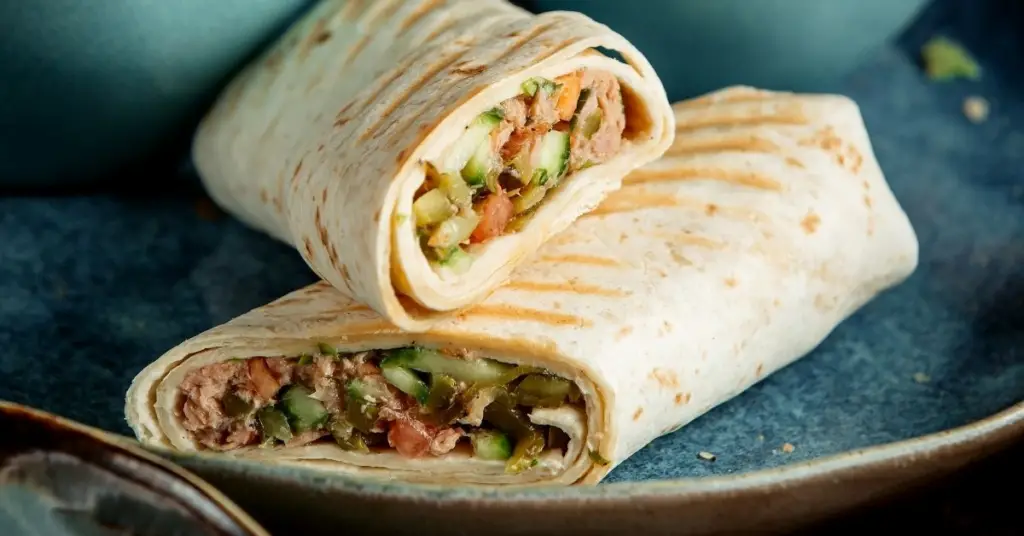
Shawarma, a beloved street food in Saudi Arabia, has its roots in the Middle East. Originating from the Turkish doner kebab, shawarma has become an integral part of Saudi Arabian cuisine.
Typically made with thinly sliced, marinated meat, often chicken or beef, Shawarma is a go-to choice for a quick, flavorful, and satisfying meal, especially popular during late-night cravings.
Saudi Arabian Food Recipes Shawarma: Ingredients
For the Marinade
- 500g boneless chicken or beef, thinly sliced
- 1 cup plain yogurt
- 3 tablespoons olive oil
- 4 cloves garlic, minced
- 1 teaspoon ground cumin
- 1 teaspoon ground coriander
- 1 teaspoon ground paprika
- 1 teaspoon ground turmeric
- Salt and pepper to taste
Shawarma Sauce:
- 1 cup tahini
- 2 tablespoons plain yogurt
- 2 tablespoons lemon juice
- 2 cloves garlic, minced
- Salt to taste
- Chopped fresh parsley for garnish
Serving:
- Pita bread or flatbreads
- Sliced tomatoes
- Sliced cucumbers
- Sliced red onions
- Pickles
Saudi Arabian Food Recipe: Shawarma
Marinate the Meat
- In a bowl, combine the thinly sliced meat with yogurt, olive oil, minced garlic, ground cumin, ground coriander, ground paprika, ground turmeric, salt, and pepper.
- Coat the meat thoroughly in the marinade, cover the bowl, and let it marinate in the refrigerator for at least 2 hours or preferably overnight.
Cook the Meat
- Heat a skillet or grill pan over medium-high heat.
- Cook the meat in batches until it’s brown and cooked through. The goal is to achieve a slightly crispy exterior while keeping the meat tender.
Prepare the Shawarma Sauce
- In a bowl, mix tahini, plain yogurt, lemon juice, minced garlic, and salt to create the Shawarma sauce. Adjust the seasoning according to taste.
Assemble the Shawarma
- Warm the pita bread or flatbreads.
- Spread a generous spoonful of Shawarma sauce on the bread.
- Add a portion of the cooked meat and top it with sliced tomatoes, cucumbers, red onions, and pickles.
- Garnish with chopped fresh parsley.
Serve
- Roll the bread around the filling to create a shawarma wrap or serve the ingredients on a plate for a shawarma bowl.
Presentation
Serve Shawarma wraps on a platter or individual plates, showcasing the vibrant colors of the vegetables and the succulent, marinated meat.
Drink Pairing
Pair Shawarma with a classic Ayran, a yogurt-based drink, or a refreshing glass of Tamarind juice to complement the bold flavors.
Shawarma is not just a meal; it’s an experience of textures and tastes that capture the essence of Saudi Arabian street food. Enjoy this flavorful delight with friends or family, bringing a touch of Middle Eastern culinary tradition to your table.
Saudi Arabian Food – Kabsa (The Saudi Arabian National Dish)
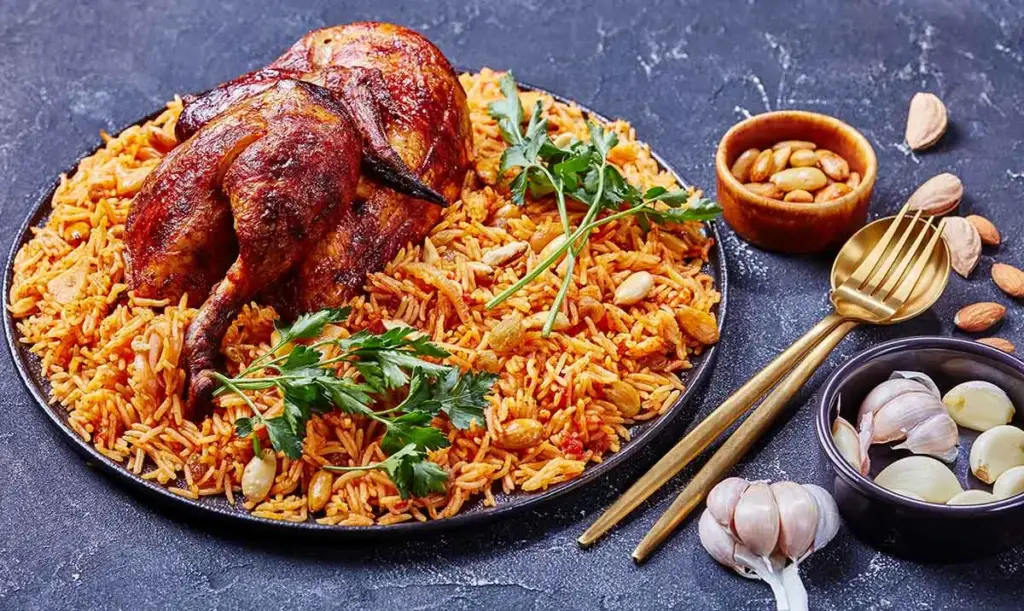
Kabsa is the national dish of Saudi Arabia. It has Bedouin roots and Saudi’s often serve it during celebrations and special occasions.
Kabsa has ancient Bedouin origins and has evolved over centuries.
Saudi Arabian Food – Kabsa Ingredients
- Basmati rice
- lamb
- tomatoes
- aromatic spices.
Saudi Arabian Food Recipe – Kabsa
- Cook rice and meat
- Add the spices,
- Served with a side of the Kabsa with yogurt.
Presentation
Present Kabsa on a large platter, garnished with almonds and fresh herbs.
Drink Pairing
Enjoy Kabsa (The Saudi Arabian National Dish) with a cold glass of Ayran, a yogurt-based beverage.
Saudi Arabian Food – Harees: A Hearty Saudi Arabian Comfort Dish

Harees is a traditional dish with ancient roots in Arabian cuisine, particularly popular in Saudi Arabia during the holy month of Ramadan. Originating from the Bedouin communities, Harees has a history that dates back centuries, making it a cherished comfort food.
This dish is a symbol of unity and community, often prepared and shared with neighbors and loved ones.
Saudi Arabian Food – Ingredients
- 1 cup whole wheat grains (cracked wheat)
- 1 cup coarsely ground wheat
- 1 kg chicken or lamb, bone-in, cut into pieces
- 1 large onion, finely chopped
- 4 cloves garlic, minced
- 2 tablespoons ghee or clarified butter
- 1 teaspoon ground cinnamon
- 1 teaspoon ground cardamom
- Salt to taste
- Water
Saudi Arabian Food Recipe – Harees
Prepare the Grains
- Rinse the whole wheat grains thoroughly and soak them in water for at least 6 hours or overnight.
- In a large bowl, combine the soaked whole wheat grains with the coarsely ground wheat.
Prepare the Meat
- In a pot, combine the chicken or lamb pieces with chopped onion, minced garlic, ghee, ground cinnamon, ground cardamom, and salt.
- Cook the meat over medium heat until it’s brown and the onions are soft.
Combine and Cook
- Add the soaked wheat mixture to the pot with the meat and spices.
- Pour in enough water to cover the ingredients and bring the mixture to a boil.
Simmer and Cook
- Reduce the heat to low and let the mixture simmer, stirring occasionally to prevent sticking.
- Continue cooking until the grains and meat have fully softened and the mixture reaches a porridge-like consistency. This may take several hours.
Adjust Consistency and Seasoning
- If needed, add more water to achieve the desired consistency. The dish should have a smooth, creamy texture.
- Adjust the salt and seasoning according to taste.
Presentation
Serve Harees in deep bowls, highlighting its creamy texture and the combination of tender meat and softened grains. Garnish with a drizzle of ghee or a sprinkle of ground cinnamon for an extra layer of flavor.
Drink Pairing
Pair Harees with a warm cup of Arabic coffee or a refreshing mint tea to complement its hearty nature.
Harees is more than just a dish; it’s a symbol of community and togetherness. Whether enjoyed during Ramadan or any other time, this comforting meal brings people together, celebrating the rich flavors and traditions of Saudi Arabian cuisine.
Saudi Arabian Food – Mandi: A Fragrant Feast from Saudi Arabian Cuisine

Mandi is a traditional Saudi Arabian dish that has Bedouin roots. Originating from Yemen, Mandi has evolved into a celebrated dish in Saudi Arabia, known for its aromatic flavors and unique cooking method.
It’s often prepared for special occasions, feasts, and family gatherings, showcasing the essence of Arabian hospitality.
Saudi Arabian Food – Mandi: Ingredients
For the Rice:
- 2 cups Basmati rice
- 4 cups chicken or beef broth
- 1 large onion, finely chopped
- 2 tablespoons ghee or clarified butter
- 1 teaspoon ground cinnamon
- 1 teaspoon ground cardamom
- Salt to taste
For the Meat:
- 1 kg lamb or chicken, cut into pieces
- 2 tablespoons Mandi spice mix (available in Middle Eastern grocery stores)
- 1 large onion, finely chopped
- 4 cloves garlic, minced
- 3 tablespoons vegetable oil
- Salt and pepper to taste
Mandi Spice Mix (Optional):
- 1 tablespoon ground cumin
- 1 tablespoon ground coriander
- 1 tablespoon ground black lime (loomi)
- 1 tablespoon ground cinnamon
- 1 tablespoon ground cardamom
- 1 tablespoon ground cloves
- 1 tablespoon ground black pepper
Saudi Arabian food recipe – Mandi
Prepare the Meat
- In a bowl, marinate the meat with Mandi spice mix, chopped onion, minced garlic, vegetable oil, salt, and pepper. Allow it to marinate for at least 1 hour, or preferably overnight in the refrigerator.
Sear the Meat
- Heat a large pot over medium-high heat and add a bit of vegetable oil. Sear the marinated meat until it gets a golden brown color. Set aside.
Prepare the Rice
- In a separate pot, sauté the chopped onion in ghee until translucent. Add ground cinnamon, ground cardamom, and salt.
- Add the Basmati rice and continue sautéing for a few minutes until the rice is coated with the spices.
- Pour in the chicken or beef broth, bring it to a boil, then reduce the heat to low. Cover the pot and let the rice cook until it’s tender and fluffy.
Cooking Mandi
- Preheat your oven to 180°C (350°F).
- In a deep baking dish, layer the cooked rice and the seared meat. Cover the dish tightly with aluminum foil.
- Place the dish in the preheated oven and let it cook for about 30-40 minutes, allowing the flavors to meld.
Serve
- Once done, gently fluff the rice and arrange it on a serving platter with the meat on top. Garnish with fried onions, raisins, or chopped fresh herbs.
Presentation
Serve Mandi on a large platter, showcasing the layers of fragrant rice and succulent meat. Garnish with fried onions or a sprinkle of chopped parsley for an extra visual appeal.
Drink Pairing
Pair Mandi with a traditional Saudi beverage like Jallab or a refreshing mint lemonade to complement the richness of the dish.
Mandi is more than just a meal; it’s a sensory experience that captures the essence of Saudi Arabian culinary traditions. Enjoy this aromatic feast with family and friends, celebrating the warmth and hospitality that defines Arabian cuisine.
Saudi Arabian Food – Samboosa

This is a popular street food, is often served during Ramadan and other festive occasions in Saudi Arabia.
Samboosa has Indian influences and has become a beloved snack in Saudi Arabia.
Saudi Arabian Food – Samboosa Ingredients
- Thin dough
- spiced meat or vegetables.
Saudi Arabian food recipe – Samboosa
- Fill dough with spiced filling
- Fold into triangles
- Deep-fry until golden.
Presentation
Samboosa with a side of mint chutney, arranged on a vibrant platter.
Drink Pairing
Pair Samboosa with a refreshing glass of Jallab, a traditional Middle Eastern drink.
Saudi Arabian Food – Desserts
Saudi Arabian desserts are a sweet finale to any meal, featuring a delightful array of flavors. From the iconic Baklava to the indulgent Qatayef, these puddings are a treat for the senses.
Saudi Arabian Food – Luqaimat: A Sweet Bite of Saudi Arabian Delight

Luqaimat is a popular sweet treat in Saudi Arabian cuisine, enjoyed during festive occasions, celebrations, and especially during the holy month of Ramadan. These small, golden-fried dough balls are a symbol of hospitality and are often shared among family and friends.
Saudi Arabian Food – Luqaimat: Ingredients
- 2 cups all-purpose flour
- 1 teaspoon instant yeast
- 1 tablespoon sugar
- 1 tablespoon cornstarch
- 1 cup warm water
- 1/2 teaspoon saffron threads (optional, for color and flavor)
- 1/4 teaspoon ground cardamom
- A pinch of salt
- 1 cup sesame seeds or grated coconut (for coating)
- Vegetable oil (for deep frying)
Saudi Arabian food recipe – Luqaimat
Prepare the Dough
- In a bowl, combine the warm water, sugar, and instant yeast. Allow it to rest for 5-10 minutes until it becomes frothy.
- In a large mixing bowl, sift the flour and add the cornstarch, saffron threads (if using), ground cardamom, and a pinch of salt.
- Slowly pour the yeast mixture into the dry ingredients, stirring continuously to form a smooth batter. The consistency should be thick but pourable. Cover the bowl with a cloth and let the batter rise for 1-2 hours until it doubles in size.
Frying the Luqaimat
- Heat vegetable oil in a deep fryer or a heavy-bottomed pan to 350°F (180°C).
- Wet your hands with water to prevent the batter from sticking. Take a small portion of the batter and shape it into a ball (about the size of a walnut) using your fingers. Repeat until you have a few balls ready for frying.
- Carefully drop the balls into the hot oil, frying until they turn golden brown and crispy. Use a slotted spoon to remove them and place them on a plate lined with paper towels to absorb excess oil.
Coating and Serving
- While the Luqaimat is still warm, roll each ball in sesame seeds or grated coconut, ensuring an even coating.
- Arrange the Luqaimat on a serving platter, and for an extra touch, you can drizzle them with honey or date syrup.
Presentation
Serve Luqaimat on a decorative plate, garnished with a sprinkle of sesame seeds or coconut. For a festive touch, add a drizzle of honey or date syrup over the top.
Drink Pairing
Pair Luqaimat with a cup of Arabic coffee or a refreshing glass of Jallab for a delightful combination of flavors.
Luqaimat is not just a dessert; it’s a representation of the warmth and sweetness ingrained in Saudi Arabian hospitality. Enjoy these delectable bites with loved ones and savor the essence of Saudi Arabian culinary traditions.
Saudi Arabian Food – Baklava

With its layers of phyllo dough, nuts, and honey, Baklava has Ottoman origins and is often served during celebrations and family gatherings.
Baklava has a rich history, evolving from the Ottoman Empire to become a beloved dessert in Saudi Arabia.
Saudi Arabian Food – Baklava Ingredients
- Phyllo dough
- Mixed nuts
- Honey
- Nuts
Saudi Arabian food recipe – Baklava
- Layer dough and nuts
- Bake
- Drizzle with honey.
Presentation
Serve Baklava on a decorative platter, garnished with pistachios.
Drink Pairing
Enjoy Baklava with a cup of strong Arabic coffee.
Saudi Arabian Food – Qatayef

This is a stuffed pancake and is a favorite during the Ramadan season and other special occasions in Saudi Arabia.
Qatayef has ancient roots in Arabian cuisine, particularly during the month of Ramadan.
Saudi Arabian Food – Qatayef Ingredients
- Pancake batter
- Sweet cheese or nuts
- Sugar syrup.
Saudi Arabian Food – Qatayef Recipe
- Fill pancakes with sweet cheese or nuts
- Fold
- Fry until golden.
Presentation
Arrange Qatayef on a dessert platter, dusted with powdered sugar.
Drink Pairing
Pair Qatayef with a cup of traditional Arabic tea.
Saudi Arabian Food
The cuisine of Saudi Arabia is heavily influenced by the culture and history of the region. The cuisine is a reflection of the country’s nomadic past, with dishes that are simple yet flavorful. It is also heavily influenced by the country’s Islamic faith, with dishes that are halal and free of pork and alcohol.
Saudi Arabian cuisine is known for its use of spices, herbs, and nuts, as well as its use of fresh fruits and vegetables. Common spices used in Saudi Arabian cuisine include cumin, coriander, cardamom, turmeric, and saffron. Herbs such as parsley, mint, and cilantro are also commonly used. Nuts such as almonds, pistachios, and walnuts are also used in many dishes.
Fresh fruits and vegetables are also a staple of Saudi Arabian cuisine. Common fruits used in Saudi Arabian cuisine include dates, figs, apricots, and pomegranates. Common vegetables used in Saudi Arabian cuisine include tomatoes, onions, garlic, and eggplant.
Saudi Arabian cuisine is also known for its use of lamb, beef, and chicken. Lamb is the most commonly used meat in Saudi Arabian cuisine, and is often served with rice or bread. Beef and chicken are also used in many dishes, and are often served with vegetables or salads.
Rice and bread are also staples of Saudi Arabian cuisine. Rice is often served with dishes such as kabsa, a dish of spiced rice and meat. Bread is also commonly served with dishes such as shawarma, a dish of spiced meat and vegetables.
Overall, Saudi Arabian cuisine is a unique blend of flavors and ingredients that have been passed down through generations. It is a combination of traditional dishes and recipes that have been adapted to suit the modern palate.
History of Saudi Arabian Food
Some of the main events and periods in the history of Saudi Arabia are:
Pre-Islamic Arabia

The region that is now Saudi Arabia was home to several ancient civilizations, such as the Thamud, the Nabataeans, the Himyarites, and the Kindah. It was also a crossroads of trade and culture, connecting the Arabian Peninsula with the rest of the world.
The cuisine of Pre-Islamic Arabia was diverse and influenced by the nomadic lifestyle and geographical conditions of the Arabian Peninsula. The diet primarily consisted of food items that were readily available in the arid desert environment. Here are some key aspects of the cuisine during that era:
The Rise of Islam
The rise of Islam: In the early 7th century, the prophet Muhammad was born in Mecca, a city in the Hejaz region of western Arabia. He preached a new monotheistic religion, Islam, and united the Arab tribes under his leadership. He also established Medina as the first Islamic state and the second holiest city in Islam.
After his death in 632, his successors, the caliphs, expanded the Islamic empire to include most of the Middle East, North Africa, and parts of Asia and Europe.
The rise of Islam had a profound impact on Saudi Arabian cuisine, influencing not only dietary habits but also the culinary traditions and food culture of the region. Here are several ways in which the rise of Islam affected Saudi Arabian cuisine:
1. Halal Dietary Laws:
The Islamic dietary laws, known as Halal, significantly influenced food choices. Halal food adheres to Islamic principles, ensuring that the preparation and consumption align with Islamic teachings. For instance, only certain types of meat from animals slaughtered according to Islamic guidelines are considered permissible.
2. Prohibition of Certain Foods:
Islam prohibits the consumption of pork and its products. As a result, traditional Saudi Arabian cuisine avoids the use of pork in any form.
3. Emphasis on Dates and Fruits:
Islam places significance on the consumption of dates, as Prophet Muhammad is reported to have praised their nutritional value. Dates and various fruits are commonly included in Saudi Arabian cuisine, both as standalone snacks and as ingredients in dishes.
4. Iftar and Suhoor Traditions:
The Islamic practices of fasting during the month of Ramadan (Sawm) have influenced specific meal traditions. Iftar, the meal to break the fast, often starts with dates and water, following the example of Prophet Muhammad. Suhoor, the pre-dawn meal, typically includes a variety of foods to sustain individuals during the day of fasting.
5. Influence on Cooking Methods
The use of certain cooking methods aligns with Islamic principles. Grilling and roasting remain popular, and the avoidance of alcohol in cooking reflects Islamic dietary guidelines.
6. Introduction of Special Occasion Dishes:
Certain dishes became associated with special occasions and religious celebrations, such as Eid al-Fitr and Eid al-Adha. Dishes like Mansaf, a traditional dish made with rice, meat, and yogurt, are often prepared during these celebrations.
7. Culinary Adaptations:
The introduction of Islam and its spread influenced culinary adaptations, including the incorporation of spices from various regions. The Silk Road trade routes played a role in bringing new spices and flavors to Saudi Arabian cuisine.
8. Tea and Coffee Traditions:
The drinking of tea and coffee is deeply embedded in Arabian culture, and the etiquette surrounding these beverages is influenced by Islamic customs. Coffee, in particular, has a long history in the Arabian Peninsula and is often served in social and religious gatherings.
9. Culinary Diversity:
The multicultural nature of the Islamic community has contributed to the diversity of Saudi Arabian cuisine. Influences from different regions and cultures within the Islamic world have shaped the culinary landscape.
The Arab Caliphates

The Arab caliphates: The first four caliphs, known as the Rashidun, ruled from 632 to 661. They were followed by the Umayyad dynasty, which ruled from 661 to 750, and the Abbasid dynasty, which ruled from 750 to 1258.
The Umayyads and the Abbasids were both based in Damascus and Baghdad, respectively, and were influenced by Persian and Turkish cultures. They also faced challenges from rival dynasties, such as the Fatimids, the Seljuks, and the Ayyubids,
The Arab Caliphates played a crucial role in shaping and influencing Saudi Arabian cuisine through their expansion, trade, and cultural exchanges. Here are some ways in which the Arab Caliphates contributed to the development of Saudi Arabian cuisine:
1. Spread of Islamic Culinary Traditions:
The Arab Caliphates, particularly the Umayyad and Abbasid Caliphates, facilitated the spread of Islamic culinary traditions. As they expanded their territories, they brought with them the principles of Halal (permissible) and Haram (forbidden) foods, influencing the dietary habits of the regions they governed.
2. Trade and Culinary Exchange
The Caliphates were instrumental in fostering trade routes that connected the Arabian Peninsula with distant regions. This facilitated the exchange of spices, ingredients, and culinary techniques, enriching Saudi Arabian cuisine with flavors from diverse cultures.
3. Influx of Ingredients
The expansion of the Arab Caliphates introduced new ingredients to Saudi Arabian cuisine. Spices, herbs, and other culinary elements from regions like Persia, India, and North Africa found their way into Arabian kitchens.
4. Culinary Heritage in Andalusia
During the Umayyad Caliphate, the region of Al-Andalus (modern-day Spain and Portugal) became a center of cultural and scientific exchange. The culinary practices of Al-Andalus left a lasting impact on Arabian cuisine. Dishes such as Al-Andalus influenced the development of Saudi Arabian culinary traditions.
5. Medieval Culinary Innovations
The Abbasid Caliphate, with its capital in Baghdad, was a center of cultural and intellectual activity during the Islamic Golden Age. Advances in agriculture, culinary arts, and culinary literature emerged, influencing Arabian culinary practices.
6. Introduction of Sweets and Desserts
The Arab Caliphates played a role in introducing and popularizing sweets and desserts. Ingredients like sugar, which became more widely available due to trade, contributed to the development of various Arabic sweets and desserts that are now integral to Saudi Arabian cuisine.
7. Coffee Culture
The Arabian Peninsula has a rich tradition of coffee consumption, and the Arab Caliphates contributed to the spread of coffee culture. Coffee houses (Qahveh Khaneh) became important social hubs where people gathered to enjoy coffee, discuss matters, and share stories.
8. Eid and Festive Cuisine
The celebration of religious and cultural festivals, such as Eid al-Fitr and Eid al-Adha, became occasions for elaborate feasts. Special dishes, often influenced by culinary practices from the Caliphates, were prepared during these festive times.
The Ottoman rule

The Ottoman Empire was a Turkish empire that ruled over most of the Middle East, North Africa, and parts of Europe and Asia from the 13th to the 20th century. It reached its peak under Suleiman the Magnificent in the 16th century, and declined thereafter due to internal strife, corruption, and external pressure. The Ottomans conquered the Hejaz in 1517 and incorporated it into their empire as a province.
They also appointed the Sharifs as their governors and supported them against the local tribes and the foreign invaders.
The Ottoman rule had a considerable impact on Saudi Arabian cuisine, influencing culinary traditions, introducing new ingredients, and shaping the eating habits of the region. Here are several ways in which the Ottoman rule affected Saudi Arabian cuisine:
1. Culinary Exchange:
- The Ottoman Empire, with its vast territories and diverse population, facilitated a significant culinary exchange. This exchange introduced new cooking methods, ingredients, and dishes to Saudi Arabia, enriching the local cuisine.
2. Introduction of New Ingredients:
- Ottoman influence brought new ingredients to Saudi Arabian kitchens. Spices, herbs, and culinary techniques from the Ottoman Empire found their way into Arabian culinary practices, adding depth and complexity to dishes.
3. Influence on Cooking Techniques:
- Ottoman culinary practices influenced cooking methods in Saudi Arabia. Techniques such as slow cooking, simmering, and the use of various spices became integral to the culinary heritage of the region.
4. Legacy of Ottoman Sweets:
- The Ottoman Empire was known for its intricate and delicious desserts. Turkish sweets, such as baklava, Turkish delight, and various pastries, influenced the development of sweet treats in Saudi Arabian cuisine.
5. Culinary Techniques from Istanbul:
- The culinary techniques and practices from the Ottoman capital, Istanbul, influenced Arabian kitchens. Methods of preparing meats, stews, and bread, as well as the use of specific spices, left a lasting impact.
6. Development of Ottoman-Inspired Dishes:
- Some dishes in Saudi Arabian cuisine bear the imprint of Ottoman influence. The preparation methods and flavor profiles of certain dishes, such as Kabsa, may reflect Ottoman culinary techniques.
7. Coffee Culture:
- The Ottoman Empire played a role in popularizing coffee consumption. Coffeehouses, known as qahveh khaneh, became social hubs where people gathered to enjoy coffee, discuss matters, and share stories. This coffee culture became ingrained in Saudi Arabian society.
The Wahhabi movement

The Wahhabis were a religious reform movement that emerged in the 18th century in the Najd region of central Arabia. They were led by Muhammad ibn Abd al-Wahhab, a scholar who advocated a strict and puritanical interpretation of Islam, based on the Quran and the Sunnah, the teachings and practices of Muhammad.
He also denounced the practices of the Ottomans and the Sharifs, such as the veneration of saints shrines, and tombs, as idolatry and innovation.
Here are some ways in which the Wahhabi movement influenced Saudi Arabian cuisine:
1. Halal and Dietary Laws:
- The Wahhabi movement emphasized strict adherence to Islamic dietary laws, particularly the principles of Halal (permissible) and Haram (forbidden). This influence is evident in the sourcing, preparation, and consumption of food in accordance with Islamic guidelines.
2. Prohibition of Certain Foods:
- Consistent with Islamic teachings, the Wahhabi movement reinforced the prohibition of certain foods, including pork and its products. Saudi Arabian cuisine strictly avoids the use of pork in any form.
3. Simplicity and Humility:
- The Wahhabi movement advocated for simplicity and humility in various aspects of life, including food. Traditional Saudi Arabian dishes reflect a straightforward and unpretentious approach to cooking, aligning with the values promoted by the Wahhabi movement.
4. Local and Natural Ingredients:
- The emphasis on purity and adherence to Islamic principles encouraged the use of locally sourced and natural ingredients. Fresh produce, grains, and meats from the region became staples in Saudi Arabian cuisine, reflecting the movement’s focus on local resources.
5. Avoidance of Extravagance:
- The Wahhabi movement discouraged extravagance and excessiveness in all aspects of life, including food consumption. Traditional Saudi Arabian meals often exhibit a balance between nutrition and avoiding wastefulness.
6. Modesty in Food Presentation:
- The Wahhabi movement’s emphasis on modesty extended to food presentation. Meals are often served in a humble manner, and the focus is on the nutritional value of the food rather than elaborate presentations.
7. Community Dining:
- The communal aspects of dining, with an emphasis on sharing meals with family and neighbors, align with the social values emphasized by the Wahhabi movement. Large communal gatherings for meals, especially during religious occasions, reflect a sense of community and solidarity.
8. Influence on Ramadan Traditions:
- The Wahhabi movement’s influence is seen during the holy month of Ramadan. The practices of Iftar (breaking the fast) and Suhoor (pre-dawn meal) follow Islamic traditions, emphasizing dates, water, and simple, nutritious foods.
9. Tea and Coffee Culture:
- The traditional Arabian tea and coffee culture, prevalent in Saudi Arabia, is consistent with Islamic customs. Coffeehouses serve as social spaces where people gather for conversation, aligning with the communal values promoted by the Wahhabi movement.
The Al Saud dynasty

The Al Saud were a tribal confederation that originated in the Najd region of central Arabia. They were led by Muhammad ibn Saud, who allied with Muhammad ibn Abd al-Wahhab in 1744, and adopted his teachings as the official doctrine of his state.
He also embarked on a series of military campaigns to unify the Arabian Peninsula under his rule, and to spread the Wahhabi message. He and his successors faced resistance from the Ottomans, the Egyptians, the Sharifs, and the local tribes.
The Al Saud dynasty, the ruling royal family of Saudi Arabia, has played a significant role in shaping various aspects of the country, including its culture and cuisine. Here are some ways in which the Al Saud dynasty has influenced Saudi Arabian cuisine:
1. Preservation of Traditional Cuisine:
- The Al Saud dynasty has actively supported the preservation and promotion of traditional Saudi Arabian cuisine. Efforts have been made to ensure that authentic recipes, cooking methods, and culinary traditions are passed down through generations.
2. Culinary Diplomacy:
- The royal family has used culinary diplomacy as a means of fostering international relations. Hosting state dinners, banquets, and events featuring traditional Saudi Arabian dishes has been a way to showcase the country’s rich culinary heritage on the global stage.
3. Support for Culinary Arts:
- The Al Saud dynasty has supported initiatives that promote culinary arts within the country. This includes backing culinary schools, festivals, and events that celebrate the diversity of Saudi Arabian cuisine.
4. Influence on Royal Cuisine:
- The cuisine served in the royal court, known as “Al-Majlis Al-Malaki,” reflects the preferences and tastes of the royal family. The dishes served in these settings often incorporate the finest ingredients and showcase the culinary skills of chefs.
5. Modernization and Globalization of Cuisine:
- The Al Saud dynasty has played a role in the modernization and globalization of Saudi Arabian cuisine. The royal family’s engagement with the global community has led to the integration of international culinary influences into the traditional repertoire.
6. Culinary Festivals and Events:
- The royal family’s involvement in organizing culinary festivals and events has contributed to the promotion of Saudi Arabian cuisine. These gatherings provide a platform for chefs, food enthusiasts, and the public to explore and appreciate the diversity of local dishes.
7. Promotion of Local Ingredients:
- The royal family’s support for initiatives promoting local agriculture and the use of indigenous ingredients has influenced culinary practices. This emphasis on locally sourced produce aligns with a broader movement towards sustainable and traditional farming methods.
The Kingdom of Saudi Arabia:

The modern state of Saudi Arabia was founded in 1932 by Abdulaziz ibn Saud, also known as Ibn Saud in the West. He was the son of Abdul Rahman ibn Faisal, the last ruler of the second Saudi state, which was destroyed by the Ottomans in 1891.
Abdulaziz ibn Saud recaptured Riyadh, the ancestral home of his family, in 1902, and gradually consolidated his power over the four regions of Arabia: the Hejaz, the Najd, the Eastern Province, and the Southern Province.
He also signed treaties with the British and the Americans, and discovered oil in his territory in 1938. Abdulaziz ibn Saud was succeeded by his sons, who continued to rule the country as an absolute monarchy, based on the Wahhabi ideology and the Sharia law.
The history of Saudi Arabian food is deeply rooted in the country’s culture and geography. Saudi Arabia is a large country with a diverse landscape, ranging from deserts to mountains and coastal areas. This variety of terrain has allowed for a wide range of ingredients to be used in traditional Saudi Arabian dishes.
Popular Saudi Arabian Dishes
Saudi Arabian cuisine is known for its flavorful and unique dishes. Some of the most popular dishes include
- Kabsa, a rice dish cooked with spices, meat, and vegetables;
- Mandi, a dish of rice, meat, and spices cooked in a tandoor oven;
- Harees, a dish of wheat and meat cooked with spices.
- Shawarma, a sandwich made with grilled meat, vegetables, and sauces;
- Falafel, a deep-fried patty made with chickpeas, herbs, and spices.
Kabsa
Kabsa is a traditional dish that is served on special occasions. It is made with basmati rice, spices, and either chicken or lamb. The meat is cooked with onions, garlic, and tomatoes, and the rice is cooked with cardamom, cinnamon, and cloves. The dish is served with a variety of vegetables, such as carrots, potatoes, and peas.
Mandi
Mandi is a dish of rice, meat, and spices cooked in a tandoor oven. The meat is usually chicken or lamb, and it is cooked with onions, garlic, and tomatoes. The rice is cooked with cardamom, cinnamon, and cloves. The dish is served with a variety of vegetables, such as carrots, potatoes, and peas.
Harees
Harees is a dish of wheat and meat cooked with spices. The wheat is boiled until it is soft, and then it is mixed with the meat and spices. The dish is served with a variety of vegetables, such as carrots, potatoes, and peas.
Shawarma
Shawarma is a popular sandwich made with grilled meat, vegetables, and sauces. The meat is usually chicken or lamb, and it is cooked with onions, garlic, and tomatoes. The sandwich is served with a variety of sauces, such as tahini, garlic sauce, and hot sauce.
Falafel
Falafel is a deep-fried patty made with chickpeas, herbs, and spices. The patty is served with a variety of sauces, such as tahini, garlic sauce, and hot sauce. It is a popular street food in Saudi Arabia and is often served with pita bread.
These are just a few of the popular dishes from Saudi Arabian cuisine. There are many more dishes to explore, such as Kibbeh, a dish of ground meat and bulgur wheat; and Maqluba.
Traditional Saudi Arabian Food
Traditional Saudi Arabian recipes have been passed down through generations and are still enjoyed today. These recipes often feature a combination of spices, herbs, and vegetables, as well as meats such as lamb, chicken, and beef. Common ingredients used in Saudi Arabian recipes include dates, olives, nuts, and yogurt.
One of the most popular traditional Saudi Arabian recipes is Kabsa, a dish made with rice, meat, and spices. The rice is cooked in a special pot called a “dijaj” and is usually served with a side of vegetables. Another popular dish is Mandi, which is a combination of rice, meat, and spices cooked in a special oven.
Other traditional Saudi Arabian recipes include Harees, a dish made with wheat and meat, and Machboos, a dish made with rice, meat, and spices. A popular dessert is Luqaimat, which is a deep-fried dough ball served with a sweet syrup.
In addition to traditional recipes, Saudi Arabian cuisine also includes a variety of international dishes. These dishes often feature a combination of Middle Eastern and Western flavors. Popular international dishes include shawarma, falafel, and hummus.
Saudi Arabian cuisine is a unique blend of flavors and ingredients that has been enjoyed for centuries. Traditional recipes are still enjoyed today, and international dishes are becoming increasingly popular. Whether you’re looking for a traditional dish or something more modern, Saudi Arabian cuisine has something for everyone.
Saudi Arabian food culture
Saudi Arabian food culture is an important part of the country’s identity and heritage. It is a reflection of the country’s history, geography, and climate, as well as the influence of other cultures. Saudi Arabian cuisine uses spices, herbs, and other ingredients to create flavorful dishes.
The traditional Saudi Arabian diet is based on a combination of grains, vegetables, and meat. Rice is a staple food. Bread is also a common accompaniment to meals. Dairy products, such as yogurt and cheese, are also popular.
In Saudi Arabia family and friends typically share meals. Eating together is an important part of the culture, and meals are often accompanied by conversation and laughter. They often serve the meals on a large platter, and everyone eats from the same plate.
In addition to traditional dishes, Saudi Arabian cuisine also includes a variety of international dishes. These dishes are often served in restaurants and cafes, and are popular among locals and tourists alike.
Saudi Arabian cuisine is also known for its use of spices and herbs. Common spices used in Saudi Arabian dishes include cumin, coriander, cardamom, turmeric, and saffron. Herbs such as parsley, mint, and cilantro are also used to add flavor to dishes.
Overall, Saudi Arabian food culture is an important part of the country’s identity and heritage. It is a reflection of the country’s history, geography, and climate, as well as the influence of other cultures. Traditional dishes, international dishes, and the use of spices and herbs all contribute to the unique flavor of Saudi Arabian cuisine.
Benefits of Eating Saudi Arabian Food
Eating Saudi Arabian food has many benefits. Not only is it delicious and full of flavor, but it is also a great way to experience the culture and history of the country. Saudi Arabian cuisine uses spices and herbs, which can add a unique flavor to dishes. Additionally, they make many of the dishes with fresh ingredients, which can provide a healthier alternative to processed foods.
Saudi Arabian food uses healthy fats, such as olive oil and ghee. These fats are high in monounsaturated fatty acids, which can help reduce cholesterol levels and improve heart health. Additionally, many of the dishes are rich in fiber, which can help promote digestion and reduce the risk of certain diseases.
Eating Saudi Arabian food can also be a great way to explore the culture and history of the country. Many of the dishes have been passed down through generations, and they can provide insight into the country’s past. Additionally, many of the dishes are prepared with traditional cooking methods, which can provide a unique experience.
It’s a great Way to Meet Saudi’s
Finally, eating Saudi Arabian food can be a great way to connect with the people of the country. Many of the dishes are shared among family and friends, and they can be a great way to bond and create memories. Additionally, many of the dishes are served in large portions, which can be a great way to bring people together.
Overall, eating Saudi Arabian food can be a great way to experience the culture and history of the country. Not only is it delicious and full of flavor, but it is also a great way to explore the culture and connect with the people of the country. Many of the dishes include fresh ingredients and healthy fats.
Health Implications of Saudi Arabian Food
Saudi Arabian Food is influenced by various cultures and regions, such as Arab, Persian, Turkish, Indian, and African. Some of the common ingredients are rice, wheat, dates, meat, dairy, spices, and herbs.
According to the World Health Organization, the health status of the Saudi Arabian population is improving, but there are still some challenges and gaps. Some of the indicators are:
- The life expectancy at birth for both sexes was 75 years in 2019, which is higher than the regional average of 71 years, but lower than the global average of 77 years.
- The under-five mortality rate was 6.7 deaths per 1,000 live births in 2020, which is lower than the regional average of 23.4 deaths, but higher than the global average of 3.7 deaths,
- The prevalence of obesity among adults was 35.6% in 2016, which is higher than the regional average of 27.4%, and the global average of 13%.
- The prevalence of diabetes among adults was 17.7% in 2019, which is higher than the regional average of 13.2%, and the global average of 8.8%.
- The incidence of tuberculosis was 4.9 cases per 100,000 population in 2019, which is lower than the regional average of 28.9 cases, and the global average of 130 cases.
- The confirmed cases of COVID-19 were 547,505 as of 22 November 2022, with 8,758 deaths and 535,373 recoveries. The case fatality rate was 1.6%, which is lower than the regional average of 2.4%, and the global average of 2.2%.
Saudi Arabian food has both positive and negative health implications for the population.
Some of the benefits are
- The consumption of dates, which are rich in fiber, antioxidants, and minerals, can improve digestion, lower blood pressure, and prevent or treat anemia.
- The consumption of dairy products, such as milk, yogurt, and cheese, which are high in calcium, protein, and probiotics, can strengthen bones, muscles, and immunity.
- The consumption of herbs and spices, such as mint, parsley, cumin, and cardamom, which have anti-inflammatory, antioxidant, and antimicrobial properties, can boost immunity, fight infections, and prevent or treat various chronic diseases, such as diabetes, cancer, and arthritis.
Some of the drawbacks are:
- The consumption of excessive amounts of rice and wheat, which are high in carbohydrates and low in fiber, can increase blood glucose levels, leading to obesity, diabetes, and metabolic syndrome.
- The consumption of excessive amounts of meat, especially red meat and processed meat, which are high in saturated fat, cholesterol, and sodium, can increase blood cholesterol, blood pressure, and the risk of cardiovascular diseases and some cancers.
- The consumption of unsafe or adulterated food, which is a common problem in Saudi Arabia, can cause food poisoning, food-borne diseases, and chronic toxicity, affecting the health and nutrition of the population.
Therefore, Saudi Arabian food can have both positive and negative effects on health, depending on the quantity, quality, and diversity of the food consumed. A balanced and varied diet, along with proper food safety practices, can help to maximize the benefits and minimize the risks of the cuisine.
References
- Saudi Arabian cuisine – Wikipedia
- Health benefits of dates: nutritional value and potential impact on physiological systems
- Dairy products: good or bad for human health? An assessment of the totality of scientific evidence
- Spices for Prevention and Treatment of Cancers
- Rice consumption and risk of type 2 diabetes: results from a pooled analysis of 3 prospective cohorts
- cambridge.org
Climate and Geography’s Influence on Saudi Arabian dishes
The climate and geography of Saudi Arabia have influenced the cuisine of the country in various ways. Some of the main aspects are:
Saudi Arabia‘s Desert Climate
The desert climate, which is hot, dry, and arid, has limited the availability of water and vegetation, making the people rely on animal products, such as meat, milk, and cheese, as well as preserved foods, such as dates, dried fruits, and grains.
The Coastal Regions
The coastal regions, which have access to the Red Sea and the Persian Gulf, have abundant seafood, such as fish, shrimp, crab, and lobster, as well as tropical fruits, such as bananas, mangoes, and papayas.
Saudi Arabia Mountainous regions
The mountainous regions, especially in the south, have a cooler and wetter climate, allowing the cultivation of crops, such as wheat, barley, corn, millet, and sorghum, as well as fruits, vegetables, and herbs.
Saudi Arabia’s Geographic Location

The location of Saudi Arabia along the ancient trade routes, such as the Silk Road and the Incense Route, has exposed the cuisine to various influences, such as Persian, Turkish, Indian, and African, introducing spices, nuts, rice, breads, and sweets.
These factors have resulted in a diverse and rich cuisine that reflects the history, culture, and identity of the Saudi people. Some of the dishes that showcase the influence of climate and geography are:
- Mufattah: A roasted lamb served on rice, which is a symbol of generosity and hospitality in the desert regions.
- Kabsa: A rice dish cooked with meat, vegetables, and spices, which is a staple food in most regions of the country.
- Matazeez: A stew made with meat, vegetables, and dumplings, which is a popular dish in the central region.
- Saleeg: A creamy rice dish cooked with milk and chicken, which is a comfort food in the cold and rainy seasons.
- Jareesh: A porridge made with cracked wheat and meat, which is a nutritious and filling dish in the mountainous regions.
- Sayadieh: A fish and rice dish cooked with onions, tomatoes, and spices, which is a delicacy in the coastal regions.
- Mandi: A rice and meat dish cooked in a clay oven, which is a specialty of the southern region.
Conclusion
In conclusion, exploring the delights of Saudi Arabian food is a journey through rich flavors, cultural traditions, and warm hospitality. From aromatic spices to delectable sweets, each dish tells a story of the region’s culinary heritage.
FAQ’s
What makes Saudi Arabian cuisine unique?
Saudi Arabian cuisine is unique for its use of aromatic spices, bold flavors, and a combination of sweet and savory elements.
Is Saudi Arabian food spicy?
While Saudi Arabian food can be flavorful, it’s not necessarily spicy. The focus is on a balance of aromatic spices.
What is the The Saudi Arabian National Dish?
Kabsa is the national dish of Saudi Arabia, featuring spiced rice and meat.
Are there vegetarian options in Saudi Arabian cuisine?
Yes, Saudi Arabian cuisine offers a variety of vegetarian options, including dishes like hummus and falafel.
What is a traditional Saudi Arabian breakfast?
A traditional Saudi Arabian breakfast may include flatbreads, cheeses, olives, and dates.
Can I find Saudi Arabian ingredients in regular grocery stores?
Many common Saudi Arabian ingredients like dates, spices, and nuts are available in regular grocery stores.
Are there regional variations in Saudi Arabian cuisine?
Yes, Saudi Arabian cuisine varies by region, with each area having its own specialties and culinary traditions.

